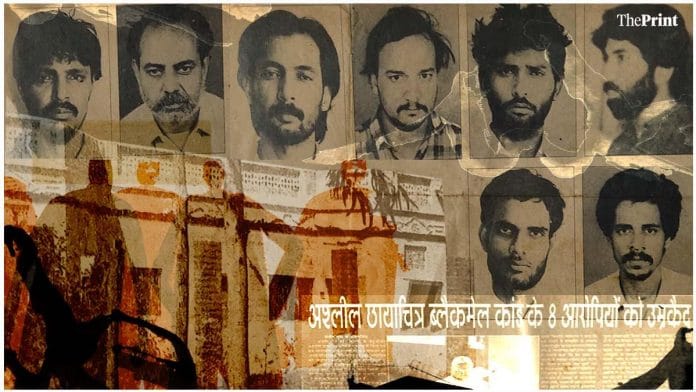New Delhi: After 32 years, one of the survivors of the 1992 Ajmer gangrape and blackmail case finally found closure after a special Protection of Children from Sexual Offences (POCSO) court sentenced six of the accused to life imprisonment and fined them Rs 5 lakh each Tuesday.
“Acchi baat hai (it’s good),” said the survivor, speaking in short sentences as she expressed her relief that her attackers, Nafis Chishty and Farooq Chishty, who reside in the same city in Rajasthan, would finally be jailed. She had previously shared her testimonies with ThePrint here and here.
“It shows that evil meets a bad end. I am happy today,” she added.
In the early 1990s, powerful men from politically connected families in Ajmer gangraped, video-taped, photographed and silenced multiple schoolgirls and college-going women — 16 teenagers, according to official records — for months. It was a scandal that captured the city’s imagination for years, spawned countless headlines and fuelled a tit-for-tat between the Congress and the Bharatiya Janata Party.
Finally, on Tuesday, Judge Ranjan Singh of the Ajmer POCSO court sentenced Nafis Chishty, Saleem Chishty, Iqbal Bhati, Naseem (also known as Tarzan), Suhail Ghani, and Sayed Jamir Hussain under sections 376 (rape) and 120B (criminal conspiracy) of the Indian Penal Code.
Each of the accused was also directed to pay a penalty of Rs 5 lakh, with the court ordering that the total fine of Rs 30 lakh be distributed equally among the survivors. The court said that under the scheduled list of compensation mandated by the National Legal Service Authority (NALSA), each of the survivors should be given a minimum of Rs 4 lakh and a maximum of Rs 7 lakh.
“While this compensation cannot fully alleviate the survivors’ pain, it can help reduce their agony,” the order read.
Advocate Virender Singh Rathod, who was formerly the prosecution lawyer in the case, described the courtroom scene as “Mela laga hua tha. Bahoot log inko saja hote hue dekhne aaye.” (It was as busy as a fair in the court premises today. Many people came to see them being sentenced.)
“I witnessed justice today. We saw the convicts cover their faces. It was such a sight to see them being treated like criminals,” he added.
Dalbeer Singh, who had served as the station house office (SHO) of Dargah police station, under which the case was first registered in 1992, expressed his happiness.
“Finally, justice has been served,” he remarked. Singh played a major role during the trial, when he was assigned the task of delivering the summons to the survivors in 2020. He was able to bring in more than 40 eyewitnesses, who also included some victims.
He described it as “one hell of a task” in an interview with ThePrint in 2022.
Santosh Gupta, who had covered the case as a cub reporter with Dainik Navjyoti, said that he feels that the lower court has finally done its job, and now it is up to the higher courts to uphold the justice.
“I just hope that the higher courts don’t let the survivors down when the convicts appeal against their sentences, as the courts have done in the past,” he said.
(Edited by Sanya Mathur)
Also read: A Diwali murder and a Godfather-style gang war is back in this Haryana village







Ms. Jyoti Yadav, under the tutelage of Mr. Shekhar Gupta, has become an accomplished “secular” journalist.
One cannot but admire the mastery with which she hides the communal angle of the heinous crime. She gaslights us readers into believing that this was a “secular” crime where the religion of the victims and the perpetrators simply did not matter.
Congratulations to The Print for adding one more “secular” journalist to the media industry.
Justice served after 32 years is injustice. Indian judiciary never fails to make a fool of itself.
What is surprising though is Jyoti Yadav’s attempt to brush under the carpet the blatantly communal nature of the crime committed. Had the victim been from a minority community she would definitely have explored the communal angle.
This, unfortunately, is what secularism means to media houses in today’s India.
Now this will go to the higher courts, where the whole process will be repeated Viz hearing again, recording evidence, calling witnesses, sorting out the arguments of both sides. So all the work done by the lower court becomes pointless. India’s judiciary is a joke.
Can anyone imagine Hindus in Pakistan/Bangladesh doing the same to Muslim women?
But in our secular nation, such things are the norm. All in the name of secularism.
Justice served after 32 years is not justice. It’s gross injustice.